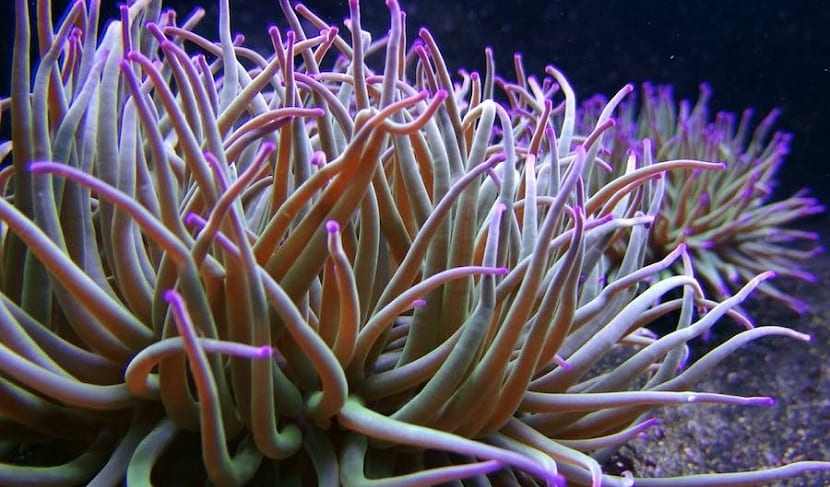
Today we travel to the seas and oceans to fully describe one of the most curious invertebrate marine animals. Related to jellyfish and in the classification of the same edge, we speak of the anemone. It belongs to the Anthozoa class and they share an ecosystem with corals. Unlike common jellyfish, the anemone has only one polyp stage and are solitary animals. Its scientific name is Actiniary.
Do you want to know all the biology and way of life of this species? You just have to keep reading 🙂
Characteristics and description of the anemone
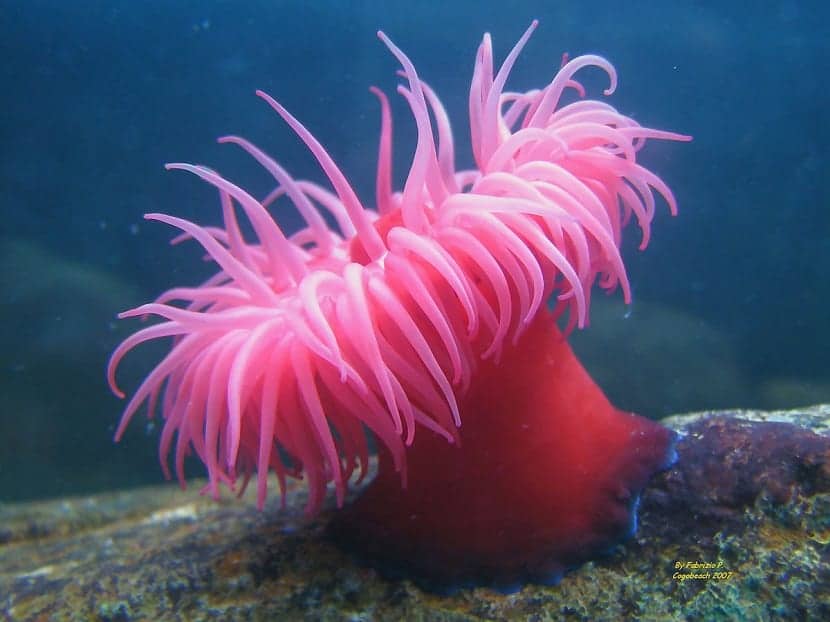
These invertebrate animals they have a radial symmetry and their body is cylindrical in shape. They are generally anchored to the substrate at the bottom of the sand in the sea. We can also find them in rocks or even shells of some invertebrate animals. They are attached to the surface thanks to a structure known as a pedal disk.
One of the special curiosities of this animal is that it only has a single exchange hole with the medium. That is, it is as if our mouth served to eat and defecate at the same time. This may sound a bit gross, but this animal has survived like this forever. It is called the oral disc and is located in the upper part. It is surrounded by a series of tentacles that are arranged along concentric rings.
Unlike the vast majority of animals, the anemone does not have specialized organs to carry out various functions. Despite this, the central part of your body has a gastrovascular cavity which, although not really an organ, most of the nutrition functions are developed. It could be said that he is in charge of breathing and feeding.
As for its nervous system, it is quite primitive and does not have any centralization component. It is responsible for collecting information on some physical-chemical stimuli in the environment and maintaining homeostasis.
Poison from the bite
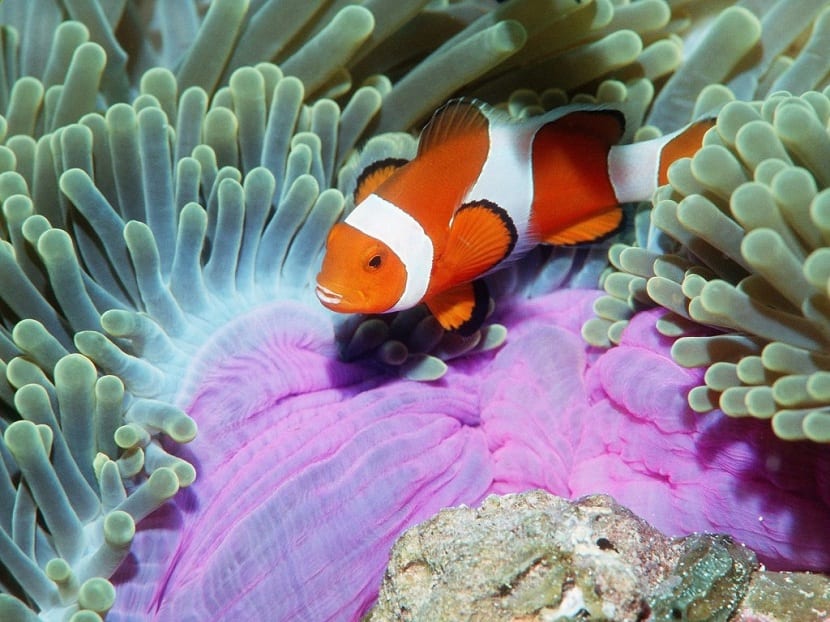
Like its fellow jellyfish, the anemone has stinging cells known as cnidocytes. These cells are found mostly in the part of the tentacles. There are animals of this edge that have them arranged throughout the body. Cells acquire this poisonous power thanks to neurotoxins capable of paralyzing other animals with the simple touch.
This mechanism serves both to defend themselves from possible predators and to help them in hunting. Thanks to this poison they can paralyze their prey to ingest them more quickly.
Habitat and area of distribution
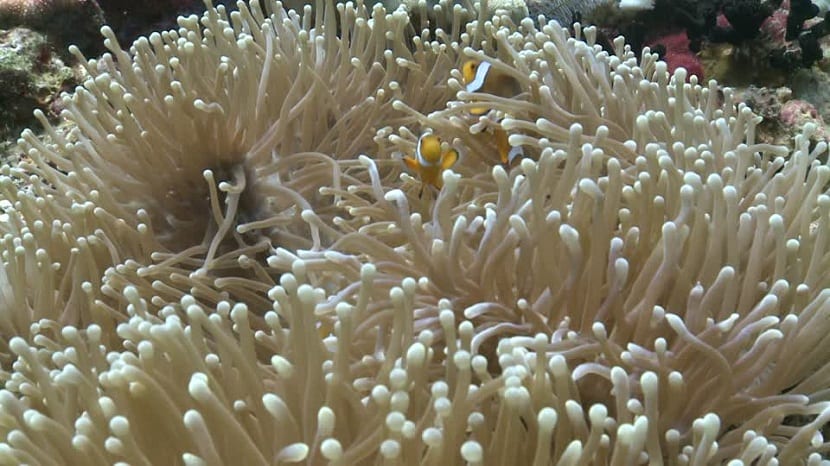
Since the anemone is a primitive invertebrate animal has adapted to many environments. They can be found in almost all the seas and oceans of the world. Even if you go to areas of extreme latitude where temperatures are low, you will find anemones. However, the highest concentration is observed in warmer places and tropical climates.
As for its habitat, always can be found at the bottom of the sea, since they are benthic organisms. The most beneficial places depend on each species. Some are capable of living in deeper areas and others are not. This variety of habitat corresponds to a process of adaptation to the amount of incident solar radiation.
When the anemone adapts to an environment, it anchors itself to the substrate and lives there. They generally do not need many requirements in order to survive. Many of them live together with other anthozoans such as corals. Its habitat is the coral reef. Both win out of that relationship, so it is a symbiosis of mutualism.
One of the clearest examples to understand this type of relationship is to analyze the anemone with the clown fish. These fish have evolved in such a way that they are totally immune to the neurotoxins of anemones. These fish can protect themselves from other predators by hiding between the tentacles and using venom. On the other hand, the action of these fish keeps the anemone's tentacles and oral disc clean at all times.
Other symbiotic relationships are established with photosynthetic algae that produce oxygen and organic matter that the animal will consume, while the algae take advantage of the waste metabolites that the animal produces.
Food
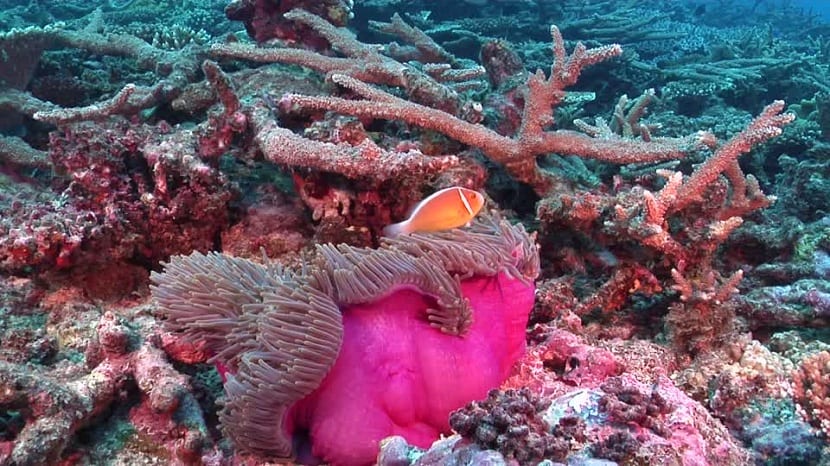
Most of the diet is based on capture their prey alive through the tentacles. In almost all cases they are small animals such as mollusks, babies de peces and even other cnidarians.
It is thanks to the tentacles that they can introduce food into their mouth and pass it into the gastrovascular cavity. Digestion takes place on this site.
Reproduction

Their reproduction can be both sexual and asexual. Sexual reproduction can be by budding or binary fission. This is about dividing your body. In some species a process called pedal laceration can be carried out. This occurs in a part of the pedal disc in which multiple fragments are divided, giving rise to new individuals.
On the other hand, sexual reproduction depends on the specific species. We can find lagoons that have separate sexes and others that are hermaphrodites. In both cases the process starts through the males. They are the ones who secrete the sperm to the environment where they are. This causes the reproductive cells of the female to be stimulated. It is then when the ovules are released to the outside and an external fertilization takes place.
As a result, a seedling larva is generated that has the ability to swim. However, as they spend several days of free life, it ends up fixing in a substrate and developing the polyp that will give rise to the new anemone. Thanks to these days when it is free, its range may increase. It depends on the currents and the areas where it can be established successfully.
These animals have become very popular as decorative items in aquariums. Because of it, indiscriminate capture of anemone has increased and it is putting the species in danger of extinction. This is done because they are ideal for those tanks that have clownfish.
With this information you can learn more about this animal of the seabed.